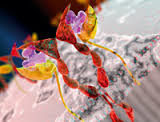Lack of reward for manufacturing quality is forcing manufacturers of sterile injectable generics to reduce investments into quality system and is leading to drug shortages, according to FDA officials [1].
Over the past few years, an increasing number of critically needed drugs, including lifesaving cancer medicines, have been in short supply. The number of drug shortages reported to FDA annually tripled from 61 in 2005 to 178 in 2010 [2]. In 2011, drug shortages reached unprecedented levels, with 251 medically necessary drugs affected, 73% of which involved sterile injectable drugs, most of which are generics.
Whereas brand-name manufacturers have high margins on their products – which gives a greater incentive to invest in quality systems and to maintain spare capacity – fewer financial incentives exist for generics manufacturers to maintain the same high quality standards that FDA requires, according to Dr Janet Woodcock, Director of FDA’s Center for Drug Evaluation and Research and Dr Marta Wosinska, Senior Economic Advisor at FDA.
Generics manufacturers compete on price and little regard is given to differences in the quality of production. Therefore, although many firms strive to exceed minimum manufacturing standards, economic incentives create pressures on firms to minimize expenditures and thus generate a conflict between patient safety and profit. The smaller profit margins generics manufacturers can make on their products therefore discourages the same level of investment in quality control that brand-name drugmakers can make. In fact, of the reported reasons for sterile injectable drug shortages in 2011, 56% were due to quality issues.
Sterile injectables have specific problems since manufacturing such products is complex and can more easily lead to problems that affect safety. They also often require dedicated manufacturing lines due to the drugs’ chemical properties, presentation form and potential for cross-contamination. This makes them more costly to produce, and also more vulnerable to shortages if manufacturing has to be halted and no backup facility exists, which is the case for many generic injectables.
For example, of the 900 abbreviated new drug applications for sterile injectables approved by FDA between 2000 and 2011, only 11 or just over 1%, had a backup facility available in case manufacturing had to be halted. This is in contrast to brand-name sterile injectable applications during the same period, where almost 20% had backup facilities.
Ageing facilities, crowded production lines, a lack of oversight over manufacturing subcontractors, the economic downturn and lower reimbursement rates were also cited as contributing to shortage problems for generic sterile injectable drugs. However, Woodcock and Wosinska argue that the main factor causing shortages of generic sterile injectable drugs ‘is insufficient market reward for quality (including reliability of production) stemming from the buyers’ inability to observe it’.
The authors cautioned that their conclusions are specific to generic sterile injectable products and should not be extrapolated to oral solid and liquid drug products. Such products are less vulnerable to shortages because it is much easier for a firm to ramp up production.
FDA has been working on preventing and mitigating shortages, and as part of this effort FDA issued a guidance document in February 2012 detailing requirements for both mandatory and voluntary notifications to the agency of issues that could result in a drug shortage or supply disruption. As a result of this initiative, FDA had only 42 new drugs reported to be in short supply during January to April 2012, compared to 90 new shortages during the same period in 2011 [3].
Woodcock and Wosinska conclude, however, that ‘we have now reached a point where FDA needs to engage the marketplace to help address the manufacturing problems, which unilateral FDA actions have not been able to prevent.’ They suggest that ‘FDA could support the buyers and payers in their purchase and reimbursement decisions by providing them with meaningful manufacturing quality metrics’, such as those already used for restaurant grades, Health Maintenance Organizations scorecards or US Pharmacopeia stamps on vitamins.
However, they agree that the marketplace would ultimately determine how much buyers are willing to pay for quality.
Related articles
FDA issues drug shortage draft guidance
Cancer drug shortages in the US
References
1. Woodcock J, Wosinska M. Economic and technological drivers of generic sterile injectable drug shortages. Clin Pharmacol Ther. 2013 Feb;93(2):170-6.
2. GaBI Online - Generics and Biosimilars Initiative. Some relief from drug shortages in the US [www.gabionline.net]. Mol, Belgium: Pro Pharma Communications International; [cited 2013 Feb 22]. Available from: www.gabionline.net/Pharma-News/Some-relief-from-drug-shortages-in-the-US
3. GaBI Online - Generics and Biosimilars Initiative. FDA says efforts to prevent drug shortages are working [www.gabionline.net]. Mol, Belgium: Pro Pharma Communications International; [cited 2013 Feb 22]. Available from: www.gabionline.net/Pharma-News/FDA-says-efforts-to-prevent-drug-shortages-are-working
Permission granted to reproduce for personal and educational use only. All other reproduction, copy or reprinting of all or part of any ‘Content’ found on this website is strictly prohibited without the prior consent of the publisher. Contact the publisher to obtain permission before redistributing.








 0
0











Post your comment